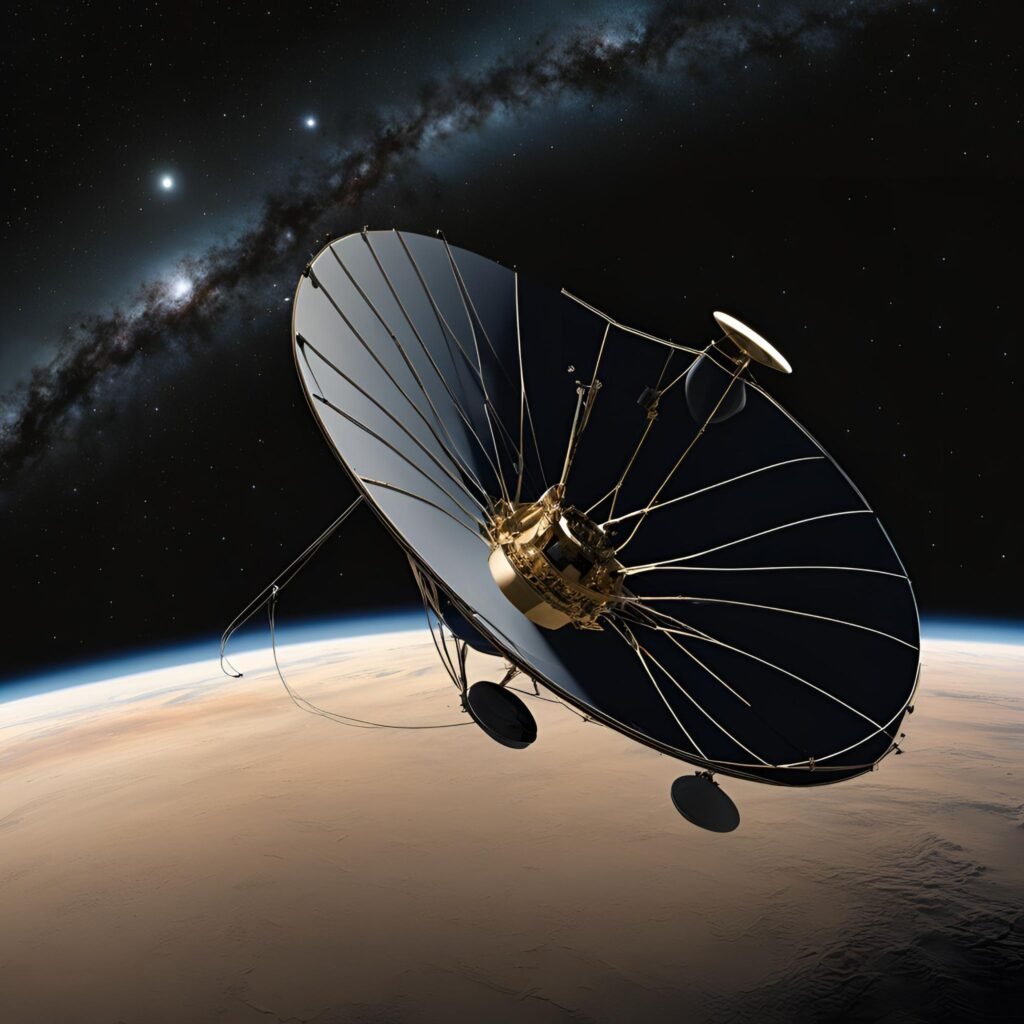
Voyager 1: The Human Far-Flung Messenger to the Cosmos
It was in 1977 that NASA launched the Voyager program, an ambitious effort to explore the outer planets and venture into unknown depths of interstellar space. Among the two spacecraft sent out on this mission, Voyager 1 stands out as an epitome of human curiosity and resilience. It is one of the most outstanding feats in space exploration, even decades later, and continues to relay valuable data from the edges of our solar system and beyond. Here, we celebrate the incredible journey of Voyager 1, examining its groundbreaking discoveries, its contributions to science, and its enduring legacy.
The Mission Begins: Launching Voyager 1
Voyager 1 was launched about three weeks after its sister mission, Voyager 2 on September 5, 1977. From its original purpose, Voyager would benefit from a configuration involving Jupiter, Saturn, Uranus, and Neptune occurring approximately once every 176 years. Using the four bodies’ alignment, gravitational slingshots allowed it and its twin to leap off one planet to use energy from the next and keep their fuel reserve at minimal but safe levels while acquiring faster speeds. While both Voyagers were designed to explore deep space, Voyager 1’s trajectory was somewhat different, in that it was to follow a more detailed study of Jupiter and Saturn before proceeding on a somewhat different trajectory outward.
Voyager 1 was designed to explore the outer planets: Jupiter and Saturn; their moons, rings, and magnetic fields. After completing that part of the mission, Voyager 1 was launched further into the outer regions of the solar system to continue on into interstellar space-an objective no spacecraft had ever attempted.
Outer Planets: Exploration of Jupiter and Saturn
It is where the encounters that Voyager 1 made with Jupiter and Saturn first brought human eyes to their closest ever images and finer data details of the two gas giants. It, in the case of Jupiter, went on to establish a new milestone when the following were made:
1. Volcanic Activity on Io: Voyager 1 first detected Io, one of the moons of Jupiter, that was showing active volcanism-the first time any volcanic activity was detected beyond Earth. This gave new insights into geological processes that occur elsewhere in the solar system.
2. Atmosphere and Magnetosphere of Jupiter: The highest resolution pictures of the atmosphere of Jupiter were captured by Voyager 1. In particular, it recorded its famous Great Red Spot-a massive storm system. This spacecraft studied the magnetosphere of this planet with very high sensitivity, disclosing that its magnetic field was thousands of times stronger than on Earth.
3. New Moons and Rings: Voyager revealed new moons orbiting Jupiter; it also found very dim rings around the planet. Nobody expected that, but this helped enlarge the knowledge about planetary ring systems outside of Saturn.
End
Voyager 1 had successfully passed the Jupiter leg and moved on to Saturn. Here are a few of the most interesting things about the second part of the mission:
1. Saturn’s Rings: The close-up pictures of the rings by Voyager 1 revealed intricate details about the structure of the rings and showed that thousands of small ringlets were made of them. Spokes discovered in the rings were also “mysterious dark radial features” puzzling scientists.
2. Titan’s Atmosphere: Voyager 1 flew past Saturn’s largest satellite, Titan. It had a dense atmosphere, mainly nitrogen. That was an important discovery since Titan’s atmosphere was the only one besides Earth’s that contained considerable levels of nitrogen.
Golden Record: A Message to the Stars
Among the most widely recognized features of the Voyager missions were the Golden Records, a 12-inch gold-plated copper disc containing sounds and images meant to represent diversity in life and human culture on Earth. The Golden Records contain 115 images, natural sounds, greetings in 55 languages, and music selections from every quarter of the globe. End. This capsule was meant for any extraterrestrial life or human explorers who might stumble upon the spacecraft.
The Golden Record is a testament to humanity’s desire to reach out to the cosmos. It is a message to the universe that “we are here.” It is a profound representation of human culture, curiosity, and a hopeful gesture that, in the vastness of space, we might someday connect with other forms of life.
Beyond the Solar System
Once it has done this tour of the planets, Voyager 1 would head out into the edge of the solar system. From here on, its mission would be to study more about the heliosphere, or the realm of the solar wind, as it exits into interstellar space. In decades to come, Voyager 1 brought to science some crucial discoveries of the boundary region that defined the bounds of the Sun.
On August 25, 2012, Voyager 1 became the first human-made object ever to cross the heliopause, the boundary between the heliosphere and interstellar space. That was the first time human beings ventured into the interstellar space between the stars. The spacecraft started reporting cosmic rays at a stronger intensity, indicating that it had entered a region dominated no longer by solar particles. While still in the outer reaches of the Oort Cloud-a region of icy objects orbiting our Sun-Voyager 1 had finally gone out from the reach of our solar wind and entered a new chapter in its passage.
Scientific Contributions from the Edge of Space
Even in interstellar space, Voyager 1 continues to send back information of value, though to Earth, the communication distance is so large that communications take more than 21 hours one way. Those instruments of the spacecraft remaining operational have yielded information not only about the density of the interstellar medium and its temperature but also serve as precursors for future missions into interstellar space.
Voyager 1 measurements of cosmic rays and plasma waves are providing scientists with a view of boundary regions between star systems. Data that will be collected from this space probe will further expand our knowledge of how the Sun interacts with the galaxy, providing information that might be crucial in the design of future missions aimed at traveling beyond our solar system.
Challenges and Future of Voyager 1
Voyager 1, which is billions of miles away from Earth, is experiencing a tough time because of the failing power supply. The space vehicle relies on radioisotope thermoelectric generators, whose plutonium fuel decays constantly. NASA had been controlling this by closing down all non-essential systems and keeping the heart of Voyager 1 as long as possible. Scientists predict that the spacecraft will continue functioning until about 2025, when it will presumably fall silent.
Even after it has stopped sending signals, Voyager 1 will still go into interstellar space. In 40,000 years, it will reach within 1.6 light-years of another star, Gliese 445, and continue to drift for millions of years. Long after it has stopped sending, Voyager 1 will remain as a testament to human culture, carrying its Golden Record—a message in a bottle across the ocean of space.
Voyager 1 Legacy and Inspiration to Generations
It has not only explored but inspired many people up to date to gaze and wonder at the universe on nights like this. Truly, it represents a common human instinct: to find out what is there outside our understanding.
In 1990, Voyager 1 turned its camera back towards Earth at Carl Sagan’s request and captured the now-famous “Pale Blue Dot” photograph, with Earth as a tiny speck in the vast expanse of space. It was an image, with Sagan’s words, that humbled us as to our place in the universe and the fragility of our world.
And we cannot help but feel, as we celebrate this journey, that Voyager 1 was not only a marvelous scientific success but reflects also human creativity and ingenuity and the still unquenchable urge to know. It humbles us by reminding of our littleness and magnificence, our feebleness and our giant aspirations and the endless possibilities within the starry expanse.

